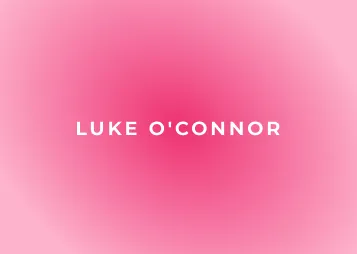So your sales pipeline is leaking prospects.
It’s a problem many - if not all - businesses face at one point or another, with lots of potential underlying causes.
But often, one stands out - pipeline design.
Poor pipeline design can have catastrophic impacts on your prospect experience and subsequent conversion rates.
Allow me to explain…
Have you designed your sales pipeline?
First up it’s time to take a long hard look at your business and ask yourself - do you even have a curated sales pipeline?
Be honest now…
Whether you’re a start-up in high-growth mode or a long-established brand in your space, it’s good to pause regularly to see if you and your team are working towards the same pipeline template.
If all individuals and departments are not working on the basis of the same pipeline, along with standardized definitions and understandings, you’re making your sales process a hell of a lot harder for yourself.
And you’ll be running a higher-than-average risk of pipeline leakage as a result.
An effective and efficient sales pipeline has simplicity at its core, with just the right level of complexity to handle the nuances and individuality of all the different leads you deal with.
Let’s jump in deeper.
A sales pipeline is like a marble run
I like to think of the sales pipeline like a marble run, did you ever play those as a kid?
You place a marble at the top, at a set starting point and watch it roll down various twists and turns, ups and downs, speeding up and slowing down as required, until it reaches your desired endpoint.
Its journey can be split into stages, each one different from the last, each carrying its own risk of the marble falling out. A prospect on a sales journey is exactly the same.
While they’re in a sales pipeline, they experience a number of stages that are different from each other.
When you’re designing a sales pipeline, you need to know which stages need to happen in which order, which are the most important and conducive to your sale and which carry the greatest risk of fallout AKA leakage. Knowing these things, you can create your conversion benchmark, for the prospects that continue to the next stage with a view to reducing your pipeline leakage.
You then need to consider each stage individually and handle it with technical skill and human touch to make it as watertight as possible.
Look at the activities happening in each stage - both those undertaken by your team and those undertaken by the prospect. Are all critical activities being undertaken? And are they being undertaken in the right order?
A secondary consideration here is, if a prospect does fall out of the designed pipeline, do you have contingency nurture plans that would give them a route to rejoin the pipeline easily in the future?
Just because a prospect has left the pipeline, it doesn’t mean they don’t want to be in it a little further down the line. Your pipeline design needs to have one central, desired route and carefully created nurture routes to support it.
Different lead source = different starting line
Now it’s time to look at the variables.
Prospects that arrive from the lead capture form on your website will be very different from those that book a meeting from your stand at an industry expo. And the same can be said for any of your other lead sources.
Prospects from each source will have different levels of awareness for who you are and what you do, expectations for the process ahead of them, timelines in mind - and that’s before you even get to the range of priorities they will have as individuals.
While having an ideal sales pipeline is great, you need to account for different lead sources joining at different stages. Different source = different starting line.
Different lead sizes = different sales journeys
Another variable is the lead size.
As we know, smaller or bigger lead sizes carry with them different sizes of decision-making groups, different budgets, different expectations from a supplier - the list goes on.
Add to this the different internal hoops they will have to jump through to get a deal over the line and you’re looking at a pretty different journey for a lead depending on their size.
And that’s ok.
This doesn’t negate your ideal pipeline design. It simply gives you an added layer of nuance to bear in mind. Some prospects won’t take your designed route through the pipeline, but the more uniform and friction-free you can make the process by aligning it to the ideal, the better.
Your ideal sales pipeline design
So let’s design the perfect sales pipeline for your business.
The ideal route a prospect would take through all the stages of a sale that would be most likely to produce a positive outcome.
Take each stage at a time and consider the information the prospect should be receiving. Think about the best format they could receive that information in - is it a demo? Or would a video or one-pager be better at a certain time?
Look at your qualification process. Is this still correctly aligned with your ICP? And is the experience enjoyable or off-putting for your prospect? No one likes being grilled, after all.
Consider the steps to close. How are contracts sent and do you find this is where deals tend to stall or slip? Find out why that is.
For each stage, nail down the ideal, dream scenario. Identify the things the prospect must have completed, otherwise known as exit criteria, to progress to the next stage. Then it’s time for your offshoots.
Take real-life prospect examples and build out the off-shoot variation of your ideal pipeline. Keep it as close to the ideal as possible, but flex for the individual requirements needed to get that deal over the line. That way, when a similar prospect comes along, you know what changes you need to make to the process to increase your chances of conversion.
Testing your sales pipeline design
Now it’s time to put your pipeline to the test.
Monitor a number of prospects through your designed pipeline. Take a diverse range of prospects ideally. Or if you want to increase your deal size, compare larger leads to smaller ones as they progress.
As far as possible, experience the process from the prospect’s point of view. We often name the stages of the sales process by the activity we undertake as the salesperson. But while you’re testing, try naming the stage by the experience the buyer would have, to really immerse yourself in their experience. For example, ‘qualification’ might become ‘intros’.
Listen back to the call recordings, take note of the words and body language they use and document how the prospect has perceived the process.
Might they have been held at one stage too long, or conversely, rushed through a certain stage too quickly when they might need more information or more time?
Test the team, sit with each member to understand when they would progress a prospect to the next stage of the process. Remember everyone will likely work slightly differently but ensure every member of the team is aligned to the sales stages and what the entry/exit criteria are for each stage.
When you’ve tested and critiqued each stage, you can make revisions to your design as required.
In conclusion…
Your pipeline design is paramount to reducing your pipeline leakage, but it’s something too many businesses don’t even consider. Using sales pipeline management software will help you see how your pipeline phases are working for you as opportunities move through it.
If your process hasn’t been carefully curated with the buyer in mind, the experience is never going to be as good as it could be. Or produce its potential.
Sit down with your team and go back to basics on your sales pipeline if you’re concerned about leakage.
If you’re wanting a little more guidance, check out our fundamental guide here.
Tom Lavery is the CEO and Co-Founder of Jiminny, the leading conversation intelligence and sales coaching platform that helps companies maximize their revenue. With over 15 years of experience in high-growth VC/PE-backed SaaS companies, Tom was previously SVP at Reward Gateway, now sharing his wealth of knowledge as a speaker in the conversation intelligence space.





.webp)






